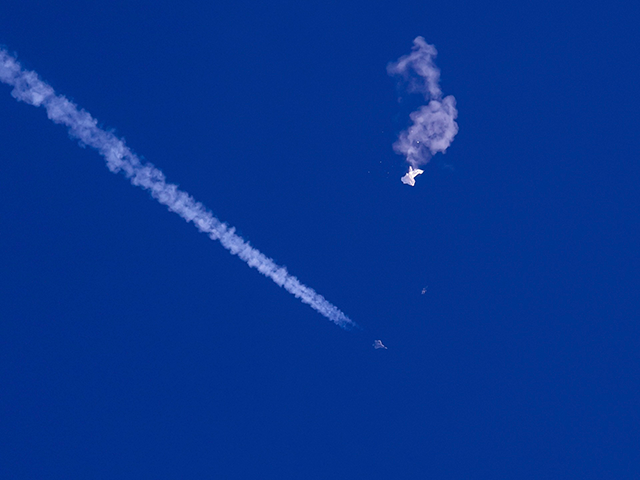Japanese Defense Minister Hamada Yasukazu said on Tuesday that Japan has the “legal right” to shoot down foreign balloons that enter its airspace.
Japan, like many other countries, was responding to the Chinese spy balloon that passed over the United States and was shot down by the U.S. military after completing its mission on Saturday. Costa Rica confirmed on Monday another spy balloon penetrated its airspace.
“Japan is concerned because some weather models indicated it crossed into its territory before traversing the Pacific Ocean, and that other balloons may have been used to probe Japan’s defenses in the past or may be used for the same reason in the future,” the South China Morning Post (SCMP) reported.
Japan says it has ‘legal right’ to destroy any foreign balloon as it probes reports of past sightings https://t.co/iwNUzCNsie
— SCMP Asia (@SCMPAsia) February 9, 2023
The government of Taiwan on Saturday said China’s spy balloons “should not be tolerated by the civilized international community.” Japan seems inclined to agree.
The SCMP quoted Japanese Deputy Chief Cabinet Secretary Isozaki Yoshihiko announcing a probe into suspicious balloon sightings over northern Japan in 2020 and 2021.
Although he could not disclose classified details of how the Japanese Air Self-Defense Forces (ASDF) responded to those past incidents, Isozaki said they would react more forcefully in the wake of the American incident. He hinted that Japan’s balloon encounters might have “connections with the incident in the United States.”
“Intrusions into Japan’s territorial airspace constitute a violation, even if it is a balloon. If necessary, we will take measures including scrambling [ASDF jets],” he said.
The government is investigating past sightings of balloon-like objects in Japan following the takedown by U.S. forces of a suspected Chinese reconnaissance balloon in the United States.https://t.co/C34oVSQQX1 pic.twitter.com/MZIZIDMnkF
— The Japan News (@The_Japan_News) February 8, 2023
Japan News noted that under the Self-Defense Forces Law, the defense minister can order the ASDF to take actions such as forcing the intruding aircraft to land or change course but shoot-down responses are currently only authorized if the intruder is “predicted to cause serious damage to people’s lives or assets.”
An unnamed member of Japan’s governing Liberal Democratic Party suggested to Japan News that the law might be amended, especially if the number of balloons mysteriously drifting into Japanese airspace increases.
“Militarily, Japan is capable of shooting down one of these balloons, but there have to be clear procedures to follow before that can happen and there still needs to be a debate over the rules of engagement for a balloon,” assistant professor Ryo Hinata-Yamaguchi of the Research Center for Advanced Science and Technology at the University of Tokyo told the SCMP.
Here's how close the spy balloon flew to the US nuclear arsenal https://t.co/nZF29JqW8p by @PhilMcCausland pic.twitter.com/WJuNr8cxDv
— Amanda Terkel (@aterkel) February 7, 2023
Hinata-Yamaguchi suggested lasers might someday be used to bring invading balloons down slowly and safely, but for the time being they present a tricky legal and practical challenge for the ASDF.
NBC News on Tuesday verified House Intelligence Committee chairman Mike Turner’s (R-OH) contention that the Chinese spy balloon brought it close to “multiple sensitive military sites,” including nuclear weapons silos, B-2 stealth bomber hangars, and Offutt Air Force Base, headquarters of the U.S. Strategic Command.
The U.S. State Department on Thursday produced evidence that the balloon was conducting espionage activities, not weather research as China claimed.
According to the State Department, the massive structure carried aloft by the balloon included “signals intelligence collection” devices. A Pentagon spokesperson said off-the-record on Thursday that the balloon had “multiple antennas to include an array likely capable of collecting and geo-locating communications,” plus solar panels large enough to supply power for “multiple active intelligence collection sensors.”

COMMENTS
Please let us know if you're having issues with commenting.